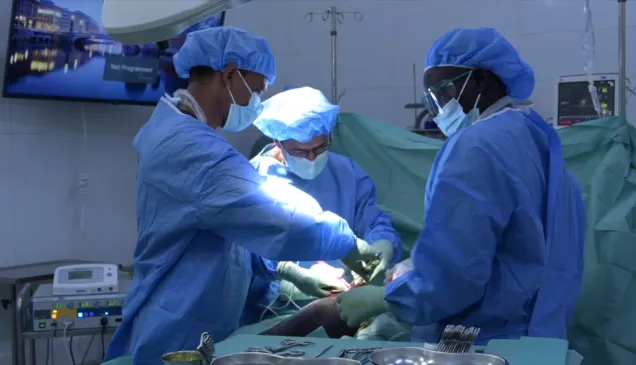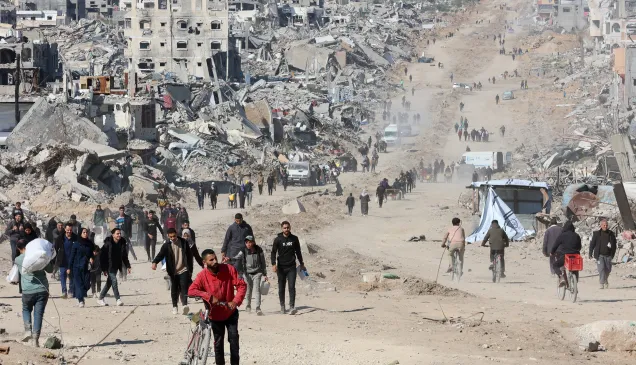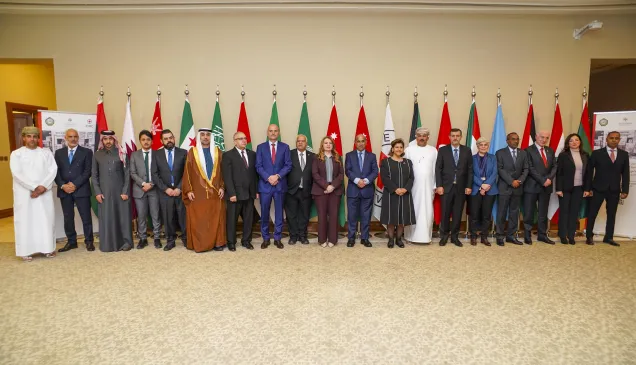The Additional Protocols at 40: upholding humanity in today's conflicts
To mark the 40th anniversary of Protocols I and II additional to the Geneva Conventions of 1949 (the Additional Protocols) on 8 June 2017, the ICRC convened a conference at the Humanitarium, where historians, lawyers, military officers and diplomats reflected on the Protocols' impact on the practice of parties to armed conflicts and their relevance for today's conflicts. The panel provided a look back at the geopolitical landscape during the Diplomatic Conference of 1977, discussed the main achievements of the Additional Protocols in increasing the protection of people affected by armed conflict over the past 40 years, and touched on the challenges in their application.
The panelists agreed that, since the adoption of the Protocols, major progress has been made in international humanitarian law through international treaties and progressive international justice. However, the picture is not entirely positive: in modern conflicts, there are also massive violations of the law.
Among the main questions addressed by the panel were: Does humanitarian law still apply in contemporary conflicts, in which terrorism, siege warfare, cyber warfare and attacks against civilians are prominent? How can the law address these issues? How can we convince parties to a conflict to abide by the Additional Protocols and more States to ratify them?
The adoption of the Protocols is a great achievement for several reasons: first, because it took place in a tense international political climate; second, because the adoption was an extraordinary diplomatic success, as the negotiation process was universal. Furthermore, as stated by panelist Yves Sandoz, an honorary member of the ICRC, "In a way, it saved international humanitarian law, which kept its universality because the negotiating parties managed to agree on a compromise that became the Additional Protocols we know today."
The panelists emphasized that the Protocols are still on the front line in today's conflicts, helping to protect civilians and providing guidance to belligerents. They are among the world's most widely ratified international instruments, with 174 countries adhering to Protocol I and 168 to Protocol II. They have inspired and laid the groundwork for multiple weapons treaties, such as the 1980 Convention on Certain Conventional Weapons and the 2008 Convention on Cluster Munitions, all of which help reduce the suffering of war victims every day. The Additional Protocols have also made a major contribution to the fight against impunity; Protocol I expanded the list of grave breaches of humanitarian law in international armed conflicts, and Protocol II blazed a trail for international criminal law in non-international armed conflicts. The Protocols' real triumph has been their ability to be translated into practice, among other things, through their influence on military manuals and States' use of more precise weapons to reduce casualties in line with humanitarian law.
When it comes to modern challenges like terrorism and asymmetrical warfare, these are precisely the sorts of issues that the Protocols originally sought to address. Therefore, efforts to dismiss the Protocols' importance often mask an unwillingness to apply time-tested rules and principles to contemporary armed conflicts. As rightly stated at the conference by Helen Cecilia Obregon Gieseken, ICRC thematic legal adviser, "It is important to remember that they, and the body of law they contributed to, are not the product of humanitarian idealism, but that they strike a balance between military necessity and humanity. In this regard, the continued dissemination of the law and the training of armed forces remain important."
Another panelist, Frank Ledwidge, a British barrister and former military officer, argued that such training was particularly important, as military culture was divided; "On the one hand, there is the culture of the military professionals, for whom the law often appeared as an obstacle rather than an enabler. On the other hand, there are those who regard humanitarian law and the Protocols as assisting them in what they do". Such units, he said, had embedded a culture of compliance with the law, to the extent that they could be considered "the real professionals." Nevertheless, he noted, all military personnel are subject to the same set of rules.
From the panelists' point of view, it was clear that the Protocols remain as relevant as they were at the time of their adoption, and that there is a need to better implement the existing rules rather than adopt new ones. Indeed, Jonathan Cuénoud, legal adviser at the Swiss Federal Department of Foreign Affairs, pointed out that "humanitarian law is still increasingly challenged in contemporary conflicts, and it has become fashionable to speak about the erosion of the law. This may represent a risk to its credibility, as it can discourage parties to conflicts to respect the law."
The conference discussed the idea of creating a forum where States could meet and talk about the implementation of humanitarian law on a regular basis, as well as how the International Conference of the Red Cross and Red Crescent and regional forums could be better used to enhance the implementation of the law.
For more information on upcoming materials and events marking the 40th anniversary of the Additional Protocols, please visit our AP's at 40 webpage.



